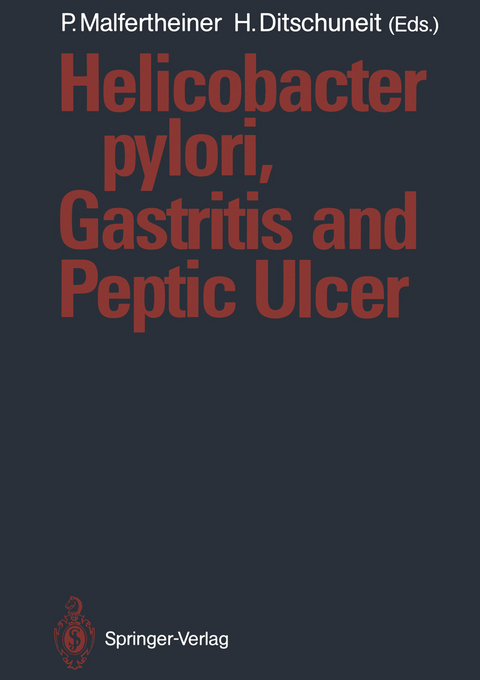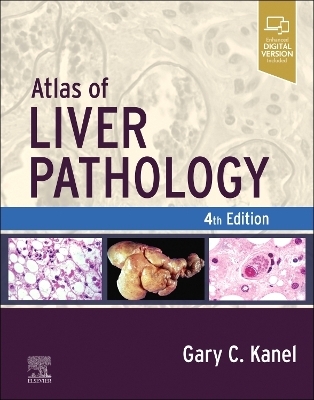
Helicobacter pylori, Gastritis and Peptic Ulcer
Springer Berlin (Verlag)
978-3-642-75317-6 (ISBN)
Helicobacter pylori - Taxonomy and Biology.- Taxonomy of Helicobacter pylori and Related Bacteria.- Helicobacter pylori: Microbiological Aspects.- Development of Genetic and Molecular Approaches for the Diagnosis and Study of the Pathogenesis of Helicobacter pylori.- Assessment of DNA and Protein Molecular Fingerprinting Methods for Strain Identification of Helicobacter pylori.- The Genesis of Coccal Forms of Helicobacter pylori.- Epidemiology of Helicobacter pylori Infections.- Physiology of Helicobacter pylori.- In Vitro Susceptibility of Helicobacter pylorito Antibiotics and Bismuth Salts and the Importance of Aquired Resistance to Antibiotics in Treatment Failures of H. pylori Infection.- Taxonomy and Biology of Helicobacter pylori-a Comment.- Pathogenic Mechanisms of Helicobacter pylori.- Virulence Factors of Helicobacter pylori - Ultrastructural Features.- Molecular Cloning and Sequencing of Helicobacter pylori Urease Genes and Detection of H. pylori using the Polymerase Chain Reaction Technique.- The Structure of Helicobacter pylori Urease.- Pathogenic Mechanisms of Helicobacter pylori: Production of Cytotoxin.- Helicobacter pylori Hemagglutinins - Possible Gut Mucosa Adhesins.- Lectin Typing of Helicobacter pylori.- Association of Helicobacter pylori with Epithelial Cells.- Influence of Helicobacter pylori on Intragastric Environment: Bile Acids and Biliary Lipids.- Animal Models of Helicobacter pylori Gastritis.- The Pathogenic Mechanisms of Helicobacter pylori - a Comment.- Local and Systemic Immune Response.- Methods of Studying the Immune Response.- Serodiagnosis of Helicobacter pyloriInfections: Suitability of Various Antigen Preparations.- Possible Clinical Uses of Serology to Helicobacter pylori.- Evaluation of a Clinical Role for Serology toHelicobacter pylori.- Serum Antibodies to the Vacuolating Toxin Produced by Helicobacter pylori.- Local Immune Responses to Helicobacter pylori Infections.- Molecular Cloning of Immunodominant Antigen Epitopes of Helicobacter pylori for Development of a Specific ELISA to Diagnose H. pylori Infection.- The Effect of Treatment on Circulating Anti-Helicobacter pylori Antibodies - a Two-Year Follow-Up Study.- Local and Systemic Immune Response - a Comment.- Morphological Aspects of Gastritis.- Helicobacter pylori Induced Gastritis in Childhood.- Comparison of Several Methods of Detecting Helicobacter pylori.- Endoscopic and Histologic Aspects of Gastritis.- Correlation Between the Grade of Activity of Type B Gastritis and Synthesis of Glycoproteins.- Immunohistological Patterns of the Local Immune Response in Helicobacter pylori Gastritis.- Risk of Peptic Ulcer in Gastritis.- Differences Between Helicobacter pylori Associated Gastritis in Patients with Duodenal Ulcer, Pyloric Ulcer, Other Gastric Ulcer, and Gastritis Without Ulcer.- Lymphocytic Gastritis.- Exocrine and Endocrine Epithelial Changes in Types A and B Chronic Gastritis.- The Classification of Gastritis.- Morphological Aspects of Gastritis - a Comment.- Helicobacter pylori in Duodenal Ulcer Pathogenesis.- Aetiological Factors in Duodenal Ulcer.- The Histogenesis of Gastric Metaplasia, in Non-specific Duodenitis.- Gastric Metaplasia in Duodenal Mucosa - Key Factor for H. pylori Colonization and Duodenal Ulcer Pathogenesis?.- The Relationship between Gastric Metaplasia and Inflammation in the Duodenum.- Gastroduodenal Motility in Relationship with Peptic Ulcer Pathogenesis and Helicobacter pylori Infection.- Relationship Between Helicobacter pylori and Gastroduodenal Physiology: Acid Secretion andepsinogens.- Helicobacter pylori and Duodenal Ulcer in the Gastrin Link.- Early Relapse Rate After Healing of H. pyloriPositive Duodenal Ulcers.- Gastric Surgery and Helicobacter pylori.- Is H. pylori-Negative Duodenal Ulcer a Separate Disease?.- Helicobacter pylori in the Pathogenesis of Peptic Ulcer - Evidence in Favour.- Helicobacter pylori as a Pathogenetic Factor in Peptic Ulcer -the Argument Against.- Helicobacter pylori in Duodenal Ulcer Pathogenesis- a Comment.- Nonulcer Dyspepsia and Motility.- Is Helicobacter pylori a Cause of Nonulcer Dyspepsia?.- Gastritis and Altered Motility; the Ability of a Mucosal Inflammatory Reaction to Alter Enteric Nerve and Smooth Muscle in the Gut.- Influence of Chronic Antral and Duodenal Inflammation on Motor Disorders.- Therapeutic Approaches.- Why Should We Treat Helicobacter pylori Infection?.- How to Eradicate Helicobacter pylori and Prevent Reinfection.- Drug Resistance in Helicobacter pylori.- If, When, and How to Treat Children?.- The General Chemistry of Bismuth with Relevance to Pharmacy and Medicine.- Safety Profile of Bismuth-Containing Medications.- Is Nonulcer Dyspepsia Improved by Treating Helicobacter pylori Infection?.- Five-Day Triple Therapy and 15-Day Double Therapy on Helicobacter pylori Eradication.- Antibacterial Therapy: Effect on Healing and Relapse of Peptic Ulcer Disease.- Natural History and Long-Term Monitoring of Therapeutic Attempts to Eradicate H. pylori.- Optimal Conditions for the Design of a Clinical Trial in Helicobacter pylori Related Duodenal Ulcération.- Treatment of Helicobacter pylori infection: a Comment.- Perspectives.- Helicobacter pylori - Future Directions in Research.
| Erscheint lt. Verlag | 29.12.2011 |
|---|---|
| Zusatzinfo | XV, 478 p. |
| Verlagsort | Berlin |
| Sprache | englisch |
| Maße | 170 x 242 mm |
| Gewicht | 839 g |
| Themenwelt | Medizinische Fachgebiete ► Innere Medizin ► Hepatologie |
| Schlagworte | bismuth-therapy • clinical research • Gastritis • Helicobacter pylori • Helicobacter pylori / Campylobacter pylori • hepatology • immune system • Microbiology • Peptic Ulcer • Research • toxonomy |
| ISBN-10 | 3-642-75317-5 / 3642753175 |
| ISBN-13 | 978-3-642-75317-6 / 9783642753176 |
| Zustand | Neuware |
| Haben Sie eine Frage zum Produkt? |
aus dem Bereich


